
History of Megalithic Europe
Sometime between 4500 and 1200 B.C. an ancient civilization created large megalithic monuments in the regions that today form the countries of Spain, France, Ireland, Britain and Sweden. Archaeologists believe the civilizations that built these megalithic structures throughout Western Europe may have developed farming around 4500 B.C. Several centuries later, the first megaliths were built in Brittany and Ireland in approximately 4300 B.C., followed by the building of more elaborate megalithic structures in the centuries that followed. The most famous of these megalithic monuments are Stonehenge, the Ring of Brodgar and Stoney Littleton.
Stonehenge, perhaps the most impressive of these megalithic monuments, is located in southern England. Stonehenge was built in three stages. The first phase, a circular earth bank bordering the monument was probably made around 3100 B.C. The second phase consisted of a timber structure build within the circular earth bank of the first phase. Recent archaeological evidence suggests that Stonehenge was used as a cremation cemetery beginning in this second phase of development. The stones themselves however, were probably not erected until several hundred years later, around 2400 B.C. The megaliths formed a circle of eighty huge shaped upright stones linked by beams. Then, over the course of approximately two hundred years later, thirty enormous stones were added to the site.
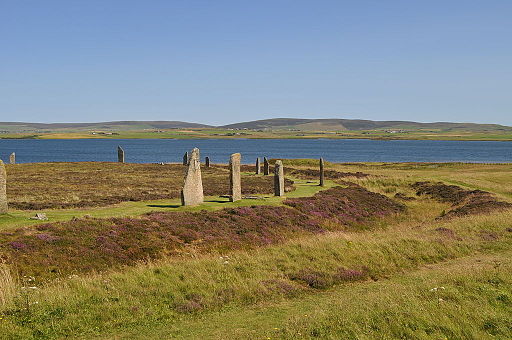 Two other noteworthy ancient megalithic structures are: the Ring of Brodgar and Stoney Littleton. The Ring of Brodgar is located in the Orkney Islands off the northeast coast of Scotland. The large stones found at Brodgar are approximately the same age as the megalithic stones of Stonehenge and their tall, thin and pointed profiles are eerily similar to Stonehenge’s larger ones. Stoney Littleton near Bath, England on the other hand is entirely different in appearance with a long exposed barrow that leads to three different burial chambers. Though no written records from the civilization that created Stonehenge and the other megalithic structures exist, it is apparent that they displayed some knowledge of engineering and metallurgy. Archaeological evidence suggests that the megalithic monument of Stonehenge could have been used as an astronomical observatory, a religious site used by Druids or a burial ground. And it is known that in approximately 2400 B.C., the megalithic civilizations learned to mine and use copper , a significant step in the development of the human race.
Two other noteworthy ancient megalithic structures are: the Ring of Brodgar and Stoney Littleton. The Ring of Brodgar is located in the Orkney Islands off the northeast coast of Scotland. The large stones found at Brodgar are approximately the same age as the megalithic stones of Stonehenge and their tall, thin and pointed profiles are eerily similar to Stonehenge’s larger ones. Stoney Littleton near Bath, England on the other hand is entirely different in appearance with a long exposed barrow that leads to three different burial chambers. Though no written records from the civilization that created Stonehenge and the other megalithic structures exist, it is apparent that they displayed some knowledge of engineering and metallurgy. Archaeological evidence suggests that the megalithic monument of Stonehenge could have been used as an astronomical observatory, a religious site used by Druids or a burial ground. And it is known that in approximately 2400 B.C., the megalithic civilizations learned to mine and use copper , a significant step in the development of the human race.
__________________________________________________________________
Family History
Family Births
- On 1608-05-01, Hans Wyshans SCHMIDT is born in Zürich, Zurich, Switzerland
- On 1634-05-01, Hannah JACKSON is born in London, England
- On 1670-05-01, Elizabeth WHITE is born in Marshfield, Plymouth, Massachusetts, United States
Family Deaths
- On 1589-05-01, Gratia SHUTLEWOORTHE dies in Whalley Parish, Lancashire, England
- On 1698-05-01, Hester WAKEMAN dies in New Haven, New Haven, Connecticut, United States
- On 1718-05-01, John BURNETT II dies in South Farnam Parish, Essex, Virginia, United States
- On 1885-05-01, William Fisher HOWARD dies in place unknown
- On 1931-05-01, Robert Davis TWYMAN dies in Fulton, Georgia
- On 2003-05-01, Elizabeth Gilley KINCHELOE dies in place unknown
- On 2005-05-01, Briggs Leon TWYMAN dies in Lubbock, Lubbock, Texas, United States
| Paternal Line | Maternal Line | ||
|---|---|---|---|
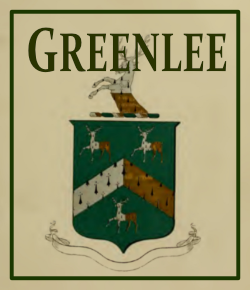 |
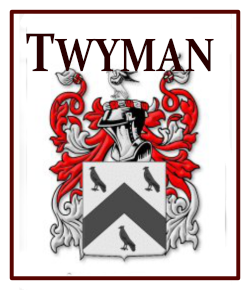 |
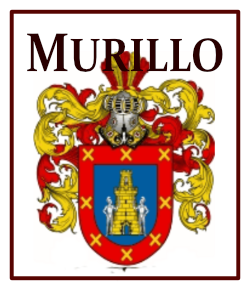 |
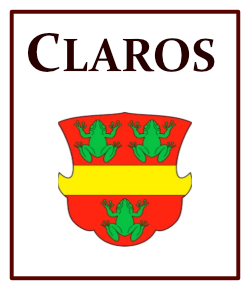 |
Categories
Genealogy
- Genealogy Portal
-
Search genealogical information related to the Greenlee, Murillo, Twyman and Claros families. Please contact us if you think we're related and can help each other in expanding our ancestry trees.

